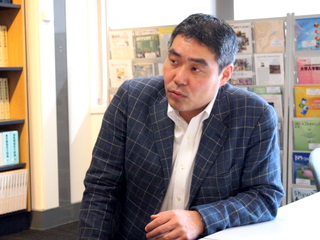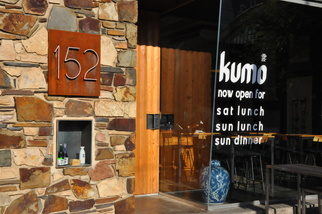English Japanese
[Mr. Irie and his company — Coop Sachi]
Together with the spread of Japanese sake culture in the world, we wish to bring the tourism industry back to life. To support that, we are actively conducting business promotions, consulting, and performance promotions. Sake lectures and the sake business, including the coordinator of “Sake Samurai” diverge into many branches.
— To start with, what is “Sake Samurai”?
Among all the 1,300 national Japanese sake makers, there is a subordinate organization consist of members in management positions who are under 45 years old. I had the honor to appoint the active ones who promote sake in the world as “Sake Samurai” and by having them play an active role, we are hoping to further publicize sake.
At the mean time, the “World Wine Challenge” — a wine competition in London, which prepares the neutral tasting as a standard convention started the “Sake” section six years ago. The main activity of “Sake Samurai” is to perform as a proactive cooperation that supports the event by increasing the variety of Sake in the exhibition.
In the Competition, the “Sake” section is the only independent category apart from grape-brewed section and it also conducts the “blind tasting” as wine section does. It is a well received event.
— Do you think the recognition of Sake has spread worldwide?
Japanese cuisine is rooted in the world, and there are also French cuisines and Japanese fusion cuisines using grapefruit and wasabi. As the original drink that goes perfectly with Japanese cuisine, the recognition of Sake is peaking up. Besides, even in French restaurants or other wine lists, it is quite normal to see 1 or 2 Japanese Sake.
— Could you please tell us more about this Sake event that’s happening soon?
Sponsored by the Consulate-General of Japan in Melbourne, it is held for the purpose of familiarizing Melbourne’s local active restauant owners and sommeliers with Japanese sake. It is a great opportunity to taste sake.
We prepared 8 sake from different regions and makers. We hope they could see the difference between regions, taste and aging condition. It is not a simple “good or bad” tasting session. We will conduct the tasting together with Japanese sake lectures.
— You have traveled around the world. How is Australia doing in spreading sake compared to other countries?
In the volume of exports, it increased 2.5 times compared to that of 2004.
I think Melbourne is a city with high sensitivity to food. In New York and Paris there are places for cuisines from all over the food, where as in Melbourne, high-level well-cooked Japanese cuisine is much more popular than the conservative low-end cooking.
Melbourne is the place where the originals can be accepted. I think Melbourne is a very well promised city.
— So your expectation for this event further increased, right?
For me, it is a very precious chance to attend a sake lecture with basically no Japanese nationals. 1/3 to half of the people who attend this event will be those who know something about Japan. So it will be a great chance for those who don’t know much about Japan and wine to get some idea about Japan and sake. I am indeed grateful.
— There are a lot of sake makers in the North-east region of Japan. How is that region doing since the earthquake in 2011?
With few exceptions, almost all the sake cellars have been restored in new cellars. Even though they had to move from their old cellar, with the support from many people and organizations, they have been restored. In each cellar, there were nearly 100,000 bottles of sake cracked, a lot of factory buildings were destroyed, and some brewers passed away in this unfortunate disaster, but the people in those regions have decided to protect the brewing history lasted for hundreds of years and the taste of the region. With this will in people’s mind, this year’s sake is ready for taste. The production of sake is also a symbol of reconstruction, and it amazes me with the power in it.
— Could you please tell us more about the 8 kinds of sake? And what are the concepts behind the selection?
Even though most of them are from the North-east region, there is a difference between the region: if it’s made near the sea or inside the mountain, if it is made near Sea of Japan or the Pacific Ocean. You than can compare the sake from different parts of Miyagi Prefecture. Also when match sake with food, sake made in the mountains surely goes best with food collected from the mountains, similarly sake made near the sea goes great with seafood, which means sake goes the best with food collected in the same region. In order to show this kind of different characters, we made the selection.
— Could you tell us your future plans?
I will continue the promotion of sake. The examination for this year’s London Wine Challenge will occur in May. Unfortunately the export of sake to the UK became unlikely, so a large number of judges are coming to Japan to examine the sake. I believe it will bring the popularity of the event to the next level. The result of the examination will be published on the “Sake Samurai” website. Please make sure you check it out.
▲”Sake Samurai” Official Site
http://www.sakesamurai.jp/
▲ Coop Sachi Official Site
http://coopsachi.jp/




